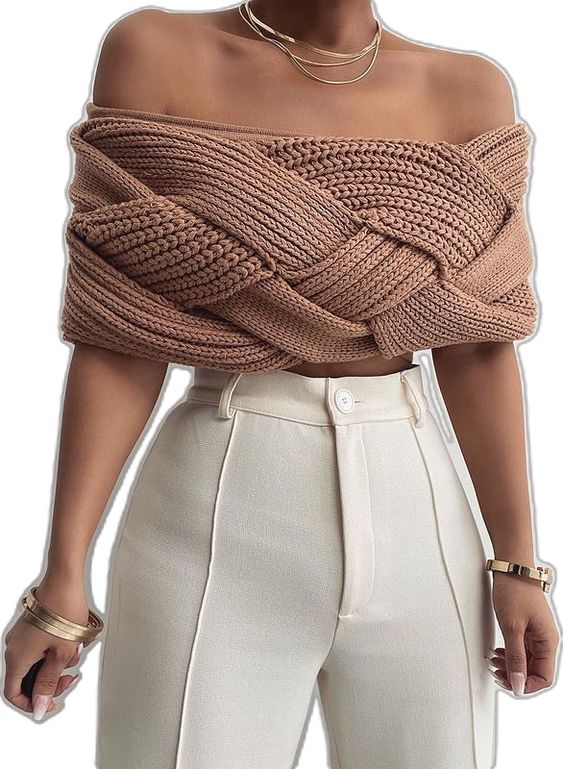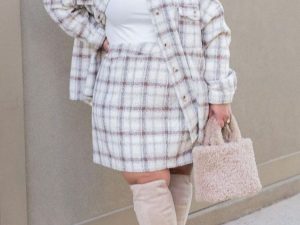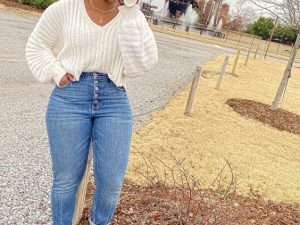With growing awareness of climate change and environmental impact, sustainable fashion has become more than just a trend—it’s a necessity. The fashion industry is one of the world’s largest polluters, but as consumers, we have the power to make choices that contribute to a greener, more sustainable world. Creating an eco-friendly wardrobe doesn’t require a complete overhaul of your current closet; rather, it’s about making mindful choices and supporting brands and practices that prioritize environmental health. In this guide, we’ll explore sustainable fashion, why it matters, and how you can build an eco-friendly wardrobe that reflects your style while caring for the planet.
What is Sustainable Fashion?
Sustainable fashion is an approach to clothing and accessory production that emphasizes eco-friendly practices, fair labor, and responsible use of resources. This approach considers the entire lifecycle of a garment—from production to disposal—and aims to reduce environmental and social impacts. Sustainable fashion involves using organic or recycled materials, reducing waste, ensuring fair wages and working conditions, and minimizing carbon emissions.
Some key principles of sustainable fashion include:
- Eco-Friendly Materials: Using natural, organic, or recycled materials instead of synthetic ones to reduce environmental harm.
- Ethical Production: Ensuring fair labor practices and safe working environments.
- Slow Fashion: Prioritizing quality over quantity and creating garments that are made to last, reducing the need for constant replacement.
- Minimal Waste: Reducing waste by repurposing leftover fabrics or implementing zero-waste patterns in production.
Why Sustainable Fashion Matters
The impact of the fashion industry on the environment is substantial. Here are some reasons why shifting to sustainable fashion is essential:
- Reducing Waste: Fast fashion leads to tons of clothing waste as people frequently discard low-quality items. Sustainable fashion emphasizes long-lasting pieces, reducing the amount of waste in landfills.
- Lowering Carbon Footprint: Many sustainable brands strive to lower carbon emissions by using eco-friendly materials and production methods. This helps reduce the industry’s overall carbon footprint.
- Water Conservation: Clothing production uses a significant amount of water, especially for materials like cotton. Sustainable fashion promotes water-efficient processes and materials that require less water.
- Supporting Fair Labor: Fast fashion often relies on cheap labor in poor working conditions. Sustainable fashion prioritizes fair wages and safe working environments for workers, supporting ethical labor practices.
Steps to Building an Eco-Friendly Wardrobe
Building a sustainable wardrobe doesn’t mean you have to throw away everything you own and start over. Here’s how to approach sustainable fashion step by step:
1. Buy Less, Choose Well
One of the simplest ways to adopt a sustainable approach is to buy less. Focus on purchasing high-quality, versatile pieces that you genuinely love and will wear often. Quality items may have a higher upfront cost, but they’ll last longer and ultimately save you money by reducing the need for replacements.
2. Opt for Timeless Pieces
Fast fashion encourages buying trendy items that quickly go out of style. Instead, choose timeless pieces with classic designs that can be worn season after season. Staple items like a well-fitted blazer, classic jeans, a white button-down shirt, and a little black dress can be the backbone of your wardrobe. These items never go out of style and can be easily mixed and matched.
3. Embrace Secondhand Shopping
Shopping secondhand is an excellent way to make your wardrobe more sustainable. Thrift stores, consignment shops, and online marketplaces like ThredUp, Poshmark, and Depop offer pre-loved items at a fraction of the price. By purchasing secondhand, you’re extending the life of a garment and reducing the demand for new production, which has a positive environmental impact.
4. Look for Sustainable Fabrics
Not all fabrics are created equal when it comes to sustainability. Here are some eco-friendly materials to consider:
- Organic Cotton: Grown without harmful pesticides and requires less water than traditional cotton.
- Tencel: Made from sustainably sourced wood pulp, Tencel is biodegradable and has a minimal environmental impact.
- Hemp: Hemp grows quickly, requires little water, and doesn’t deplete soil nutrients, making it an eco-friendly option.
- Recycled Polyester: Made from recycled plastic bottles, it offers a way to reduce plastic waste.
- Bamboo: Known for being fast-growing and renewable, bamboo can be a sustainable fabric when processed responsibly.
Always check clothing tags for these materials, and research brands to ensure their fabrics are genuinely sustainable.
5. Support Ethical and Sustainable Brands
Many brands now embrace sustainable practices, from using organic materials to ensuring ethical production. Supporting these brands helps drive demand for sustainable fashion and encourages more companies to adopt eco-friendly practices. Some popular sustainable brands include:
- Patagonia: Known for its commitment to the environment, Patagonia offers durable outdoor wear and emphasizes recycling and repair.
- Reformation: This brand uses eco-friendly materials and transparent supply chain practices to create trendy, sustainable clothing.
- Everlane: Everlane emphasizes transparency in its production process, using ethical factories and high-quality materials.
- People Tree: A pioneer in sustainable fashion, People Tree uses organic materials and follows fair trade practices.
- Stella McCartney: This luxury brand focuses on using sustainable materials and cruelty-free production processes.
By supporting brands with clear sustainability goals, you’re contributing to a positive shift in the fashion industry.
6. Practice Clothing Care and Maintenance
Caring for your clothes properly extends their lifespan and reduces the need to buy replacements. Here are some tips for maintaining your wardrobe:
- Wash Less Frequently: Washing clothes too often wears them out faster. Instead, spot-clean when possible and use a garment steamer to freshen up your clothes between washes.
- Air Dry When Possible: Avoid the dryer and let clothes air dry to prevent shrinkage and damage.
- Store Properly: Fold items that may lose shape on hangers and store delicate items in garment bags.
- Repair and Alter: Instead of discarding clothing with minor issues, consider repairing it. Basic sewing skills can be handy, or visit a tailor to make alterations.
7. Recycle and Repurpose Old Clothes
When an item has reached the end of its life, consider recycling or repurposing it rather than throwing it away. Many brands, such as H&M and The North Face, offer take-back programs where they recycle old clothes. You can also repurpose old clothing into cleaning rags, DIY projects, or upcycle them into something new.
The Importance of Mindful Shopping
Sustainable fashion encourages mindful shopping, where every purchase is intentional and purposeful. Before buying an item, consider these questions:
- Do I Really Need It?: Avoid impulsive buying by assessing whether you need the item and if it fits into your wardrobe.
- How Often Will I Wear It?: Choose items you’ll wear regularly rather than occasional statement pieces.
- Is It Well-Made?: Check the quality and fabric. High-quality pieces last longer, making them a more sustainable choice.
- Is It Versatile?: Opt for items that can be styled in multiple ways to maximize their utility in your wardrobe.
By taking a mindful approach, you’ll reduce waste and build a wardrobe filled with pieces you genuinely love and use.
The Future of Sustainable Fashion
The sustainable fashion movement is still growing, with more brands adopting eco-friendly practices and consumers demanding transparency and ethical practices. Innovation in sustainable fabrics, such as lab-grown leather and biodegradable synthetics, shows promise in making the industry even more eco-friendly. As consumers become more aware of the impact of their choices, the shift toward sustainable fashion is expected to become mainstream, driving the industry to change for the better.
Conclusion
Building an eco-friendly wardrobe isn’t about being perfect; it’s about making conscious, informed choices that contribute to a healthier planet. Whether it’s buying secondhand, investing in quality pieces, or supporting sustainable brands, each small step contributes to a larger positive impact. Sustainable fashion allows you to express your style while staying mindful of the environment, creating a wardrobe that reflects both your personal values and aesthetic. Start with a few changes, prioritize quality over quantity, and remember that sustainable fashion is a journey, not a destination. Together, we can make a meaningful impact by choosing fashion that respects both people and the planet.




